Overview
This platform consists of a suite of robotic equipment based at the Materials Innovation Factory (MIF) within the University of Liverpool. The Platform is suitable for automated formulation, and working at a range of scales suitable for materials discovery and product development.
To further advance the MIF capabilities, Royce has invested ~£3M in developing the Formulation Engine (FE) in partnership with Labman Automation, a UK SME focussing on bespoke laboratory automation platforms. The FE is a large modular robotic system that will provide academic and commercial scientists with the tools to increase their scientific outputs quickly and efficiently in a controlled environment.
The FE is designed to be as future-proof as possible and wholly expandable for future research challenges while retaining the benefits of static automation platforms such as high throughput and reliability. With its modular design, it allows up to eight separate independent automated modules to be docked into the main robot platform simultaneously for high throughput and interlinked workflows such as make and measure. Input vials ranging from 2–200ml are easily handled by the FE’s two FANUC arms which deliver materials and consumables to the modules as required so that several workflows can happen independently whilst sharing the robots’ resources.
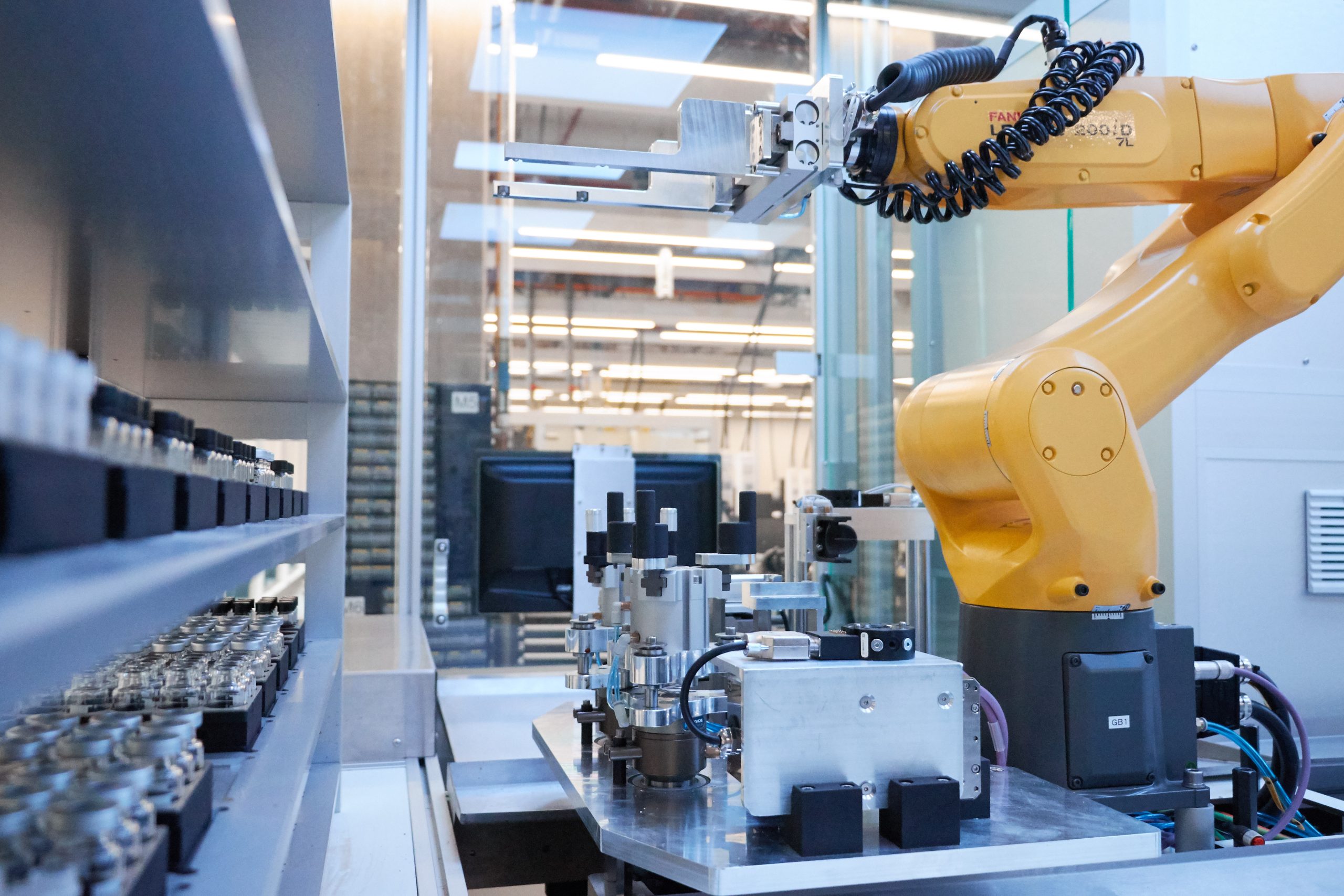
Capability
The Main Platform consists of four areas: the consumables zone which can handle various consumable types from 2ml HPLC vials up to 200ml plastic pots, the materials library, the transport system, and the module bays. Formulations are made in consumables (pots, vials and SBS format plates), which are loaded into the consumable zone (via a human operator).
The materials library contains Mobile Dispensing Units (MDUs) which are filled with raw ingredients (via a human operator) for formulating and are controlled by the Main Platform PC over Wi-Fi. The transport system consists of two FANUC robot arms which transport the consumables and MDUs from their racks to the docked processing modules in the eight module bays.
Dispensing Module (DMOD)
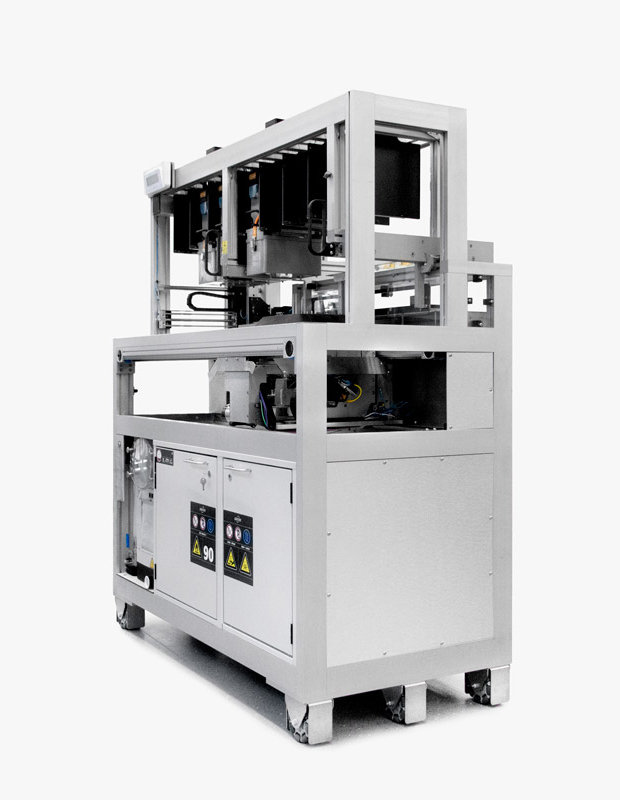
Module dispenses into various consumables fed from the main platform. It dispenses powders into boats in a dehumidified atmosphere. It also contains four fixed syringe needles for low viscosity additions.
Inert Processing Module (XYZ)
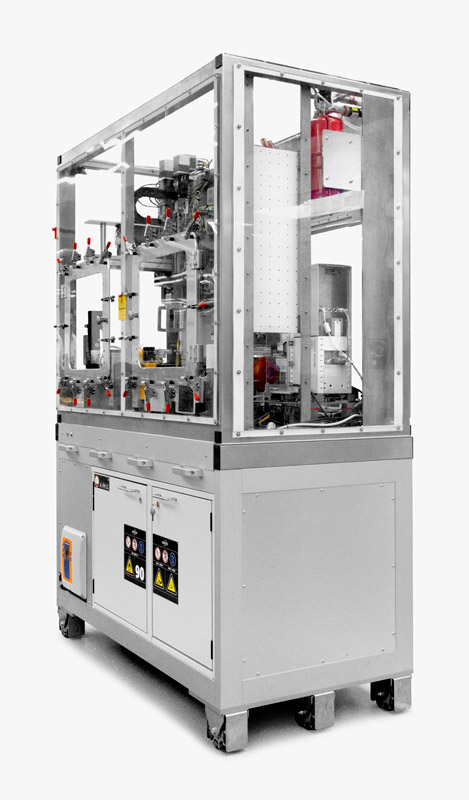
Gantry robot for moving consumable and performing syringe needle transfers across various consumables from 2ml HPLC vials up to 40ml glass vials. It also houses a Mettler Toledo Quantos for highly accurate powder dispensing. Syringe pumps dispense up to six stock solvents and allow gas caps under nitrogen or it can cap, crimp, shake and ultrasonicate vials.
Fluid Processing Module (TOM)
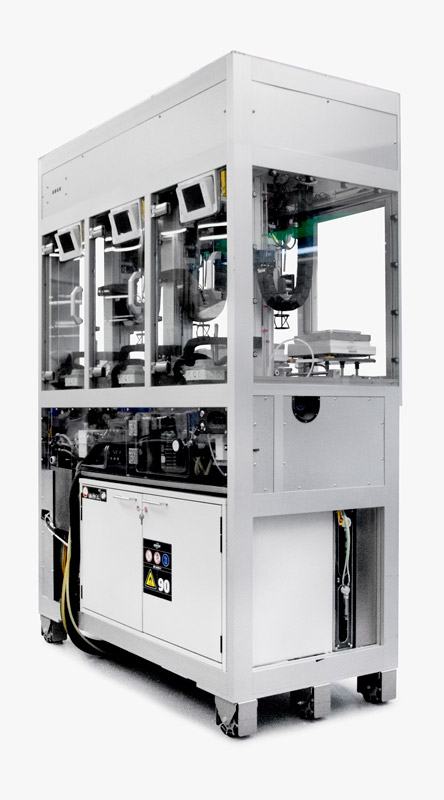
Providing three independent mixing stages with excellent distributive and dispersive mixing for process-sensitive materials at 50ml or 200ml scale. Gravimetric additions can be made whilst mixing, homogenising and controlling temperature. pH can also be measured and adjusted.
Photocatalysis Module (PCAT)
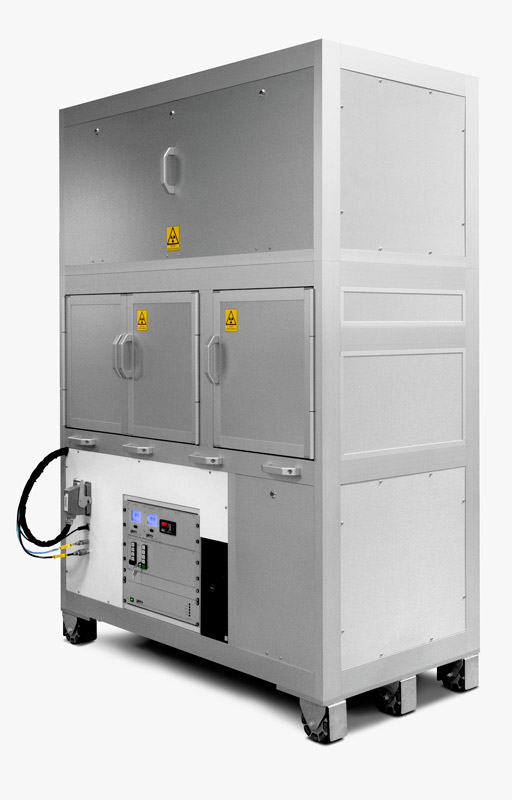
FOM Technologies Slot Die Coater
Completes the photocatalysis workflow for materials discovery and research. Following the XYZ processing module, new catalysts are exposed to light from a solar simulator to promote water splitting and carbon capture. The headspace of each sample is analysed using a mass spectrometer to detect if the reactions were successful.



